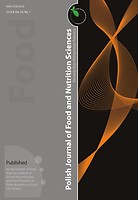
Photo from archive.org
Proteins are integral food compounds that provide nutritional, technological, and functional properties. In addition to these properties, proteins can give rise to bioactive peptides or hydrolysates, which show certain specific… Click to show full abstract
Proteins are integral food compounds that provide nutritional, technological, and functional properties. In addition to these properties, proteins can give rise to bioactive peptides or hydrolysates, which show certain specific properties such as antioxidant, antihypertensive, and antidiabetic activities [Chalamaiah et al., 2017]. The various properties of these hydrolysates and peptides make them applicable as potential agents in the treatment, prevention, and amelioration of various diseases as well as in the shelf life extension of food products [Ortiz-Martinez et al., 2014]. Bioactive peptides from foods are obtained after enzymatic hydrolysis, because the active sequences lie within the primary structure of the proteins [Aluko, 2015; Ramada et al., 2017]. Based on this fact, the study of protein hydrolysates has become a new area in biochemical and nutritional research. Enzymatic hydrolysis has been an effective way of releasing these peptides from the precursor proteins because it preserves the functionalities of the peptides. The properties of enzy-
Journal Title: Polish Journal of Food and Nutrition Sciences
Year Published: 2020
Link to full text (if available)
Share on Social Media: Sign Up to like & get
recommendations!